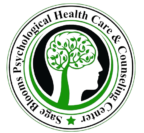Applied Behaviour Analysis (ABA) Therapy
Applied Behavior Analysis (ABA) is a therapy based on the science of learning and behavior. It is frequently applied to children with autism and other developmental disorders, focusing on imparting skills in specific domains of functioning. These domains include social skills, communication, academic and learning skills, motor dexterity, hygiene and grooming, and more.
ABA therapy is tailored to individual needs and can be delivered in a variety of settings, such as school, home, clinic, and other community settings. The goal of treatment is to help children function as independently and successfully as possible.
Understanding Behavior
Behavior analysis helps us understand the underlying causes of behavior, how behavior is affected by the environment, and how learning takes place. ABA therapy applies this understanding of behavior to real-life situations, with the goal of increasing helpful behaviors and decreasing harmful behaviors or behaviors that hinder learning.
ABA therapy programs can help in the following ways:
- Increase language and communication skills
- Improve attention, focus, social skills, memory, and academics
- Decrease problem behaviors
The methods of behavior analysis have been used and studied for decades. They have helped many kinds of learners gain different skills, from healthier lifestyles to learning a new language. Therapists have been using ABA to help children with autism and related developmental disorders since the 1960s.
Positive Reinforcement
Positive reinforcement is one of the main strategies used in ABA therapy. When a behavior is followed by something that is valued (a reward), a person is more likely to repeat that behavior. Over time, this encourages positive behavior change.
In ABA therapy, the therapist first identifies a goal behavior. Each time the person successfully uses the behavior or skill, they receive a reward. The reward is meaningful to the individual and can include praise, a toy or book, watching a video, access to a playground or other location, and more. Positive rewards encourage the person to continue using the skill, leading to meaningful behavior change over time.
Antecedent, Behavior, Consequence
The following three steps, known as the “A-B-Cs,” help us teach and understand behavior:
- An antecedent: This is what occurs right before the target behavior. It can be verbal, such as a command or request, or physical, such as a toy or object, or even a light, sound, or something else in the environment. The antecedent can come from the environment, another person, or be internal, such as a thought or feeling.
- A resulting behavior: This is the person’s response or lack of response to the antecedent. It can be an action, a verbal response, or something else.
- A consequence: This is what comes directly after the behavior. It can include positive reinforcement of the desired behavior or no reaction for incorrect or inappropriate responses.
Treatment goals in ABA therapy can include many different skill areas, such as communication and language, social skills, self-care (such as showering and toileting), play and leisure, motor skills, and learning and academic skills.
